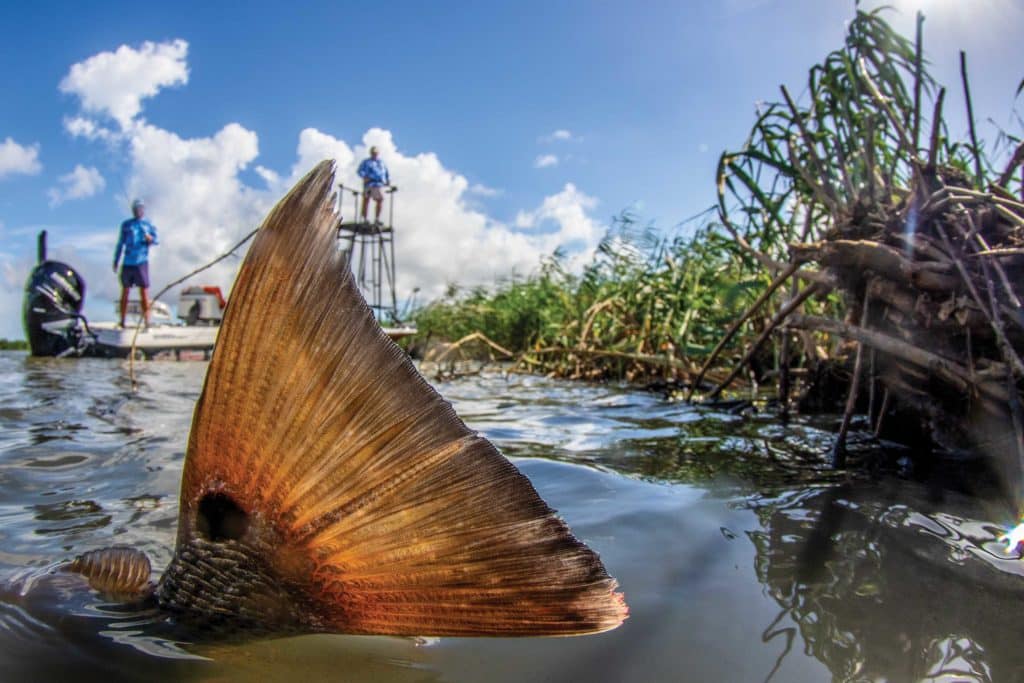
Ask inshore anglers along the Southeast United States to name their favorite fish, and the red drum (aka redfish, channel bass or puppy drum) ranks high on the list, if not at the top, for many reasons. Abundant from Texas around the Florida Peninsula and up to Chesapeake Bay, they are found in the most beautiful places along our coasts, from ankle-deep flats to tannin-stained backwaters and crashing surf.
Redfish aggressively respond to a variety of natural baits and lures, and a broad tail and muscular body make them formidable foes when hooked. In hand, they have a striking, reddish-bronze color and distinctive black spot at the base of the tail. What’s more, fillets lend themselves to a variety of delectable preparations.
Marsh Madness
Immature redfish (up to four years old and 32 inches in length) thrive in estuaries throughout the Southeast US, with increasing numbers occurring in the mid-Atlantic region. Able to survive in everything from freshwater rivers to the Gulf Stream, you’ll find them sharing upriver space with largemouth bass and hanging out with snook at ocean inlets. Thanks to a wide tolerance of water temperatures, juvenile reds remain active all year, offering angling opportunities from the heat of summer to the coldest days of winter.
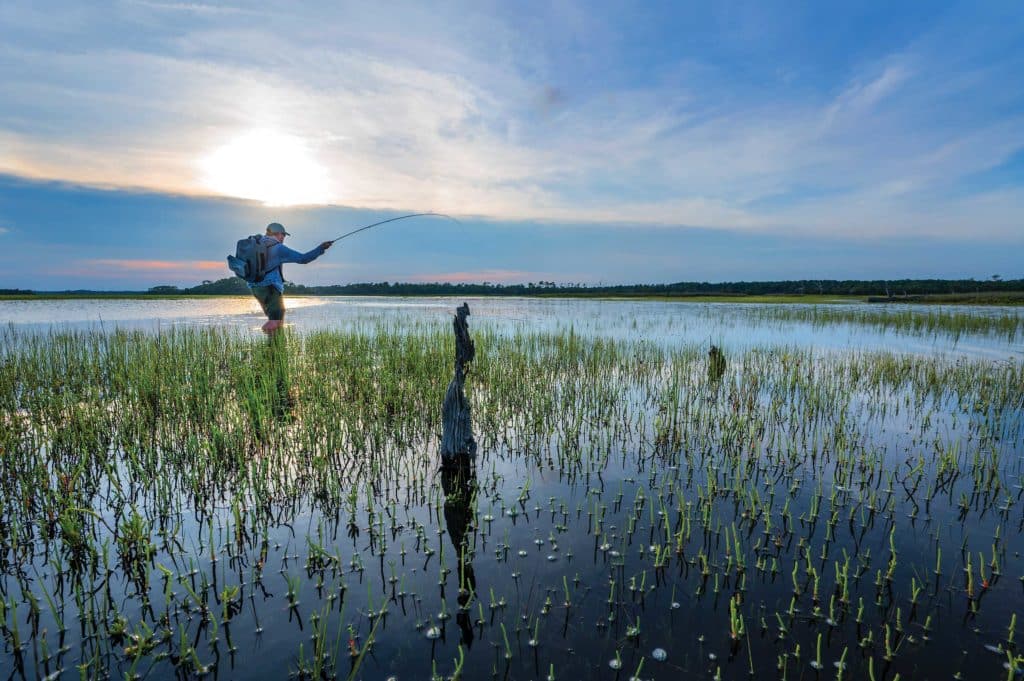
Seeking safety in schools of dozens to hundreds, these juvies usually are found in the same areas at the same times each year. Tagging studies reveal they stay within a small home range, moving predictably to daily and seasonal changes in conditions. Redfish fanatics know this and take to the water with a plan based on the calendar and tide predictions.
Young reds school over all bottom types: in and around oyster reefs, submerged aquatic vegetation, mangroves and flooded marshes. Occasionally, they swim in the surf, near inlets that connect estuaries and the open ocean. Inshore, they roam shorelines, staging at grassy points, docks, jetties, fallen trees, and the mouths of small creeks when food is available. Wading birds, frenzied baitfish, nervous water and moving marsh grass clue anglers to the presence of reds, which are also seen foraging in shallow water with their backs and tails breaking the surface. Single fish or schools moving in skinny water create a distinctive bulge on the surface, known as a push. This behavior makes juvenile reds a favorite of the sight-fishing crowd, who stealthily stalk them on foot or from shallow-draft watercraft, including stand-up paddleboards.
Redfish are designated as gamefish in many states, making it illegal to sell them. Today, redfish daily creel and slot-size limits provide anglers an opportunity to keep a few fish while ensuring enough juveniles reach adulthood, thereby sustaining populations. Marine Recreational Information Program angler catch-and-effort surveys show far more redfish are released than kept. For example, in my home state of Georgia, anglers release about two-thirds of the redfish caught, despite a liberal five-fish daily creel limit.
Bull Fight
At maturity, a redfish leaves its younger kin to join schools of adults varying in age up to 50-plus years. Offshore during the colder months, the adults return to nearshore waters from spring through the late-summer-through-autumn spawning season. Homing behavior leads adults back to the bays and estuaries where they spent their youth. Bull reds, as they’re respectfully known, frequently tip the scales at the 30-pound mark, with fish over 50 pounds not uncommon.
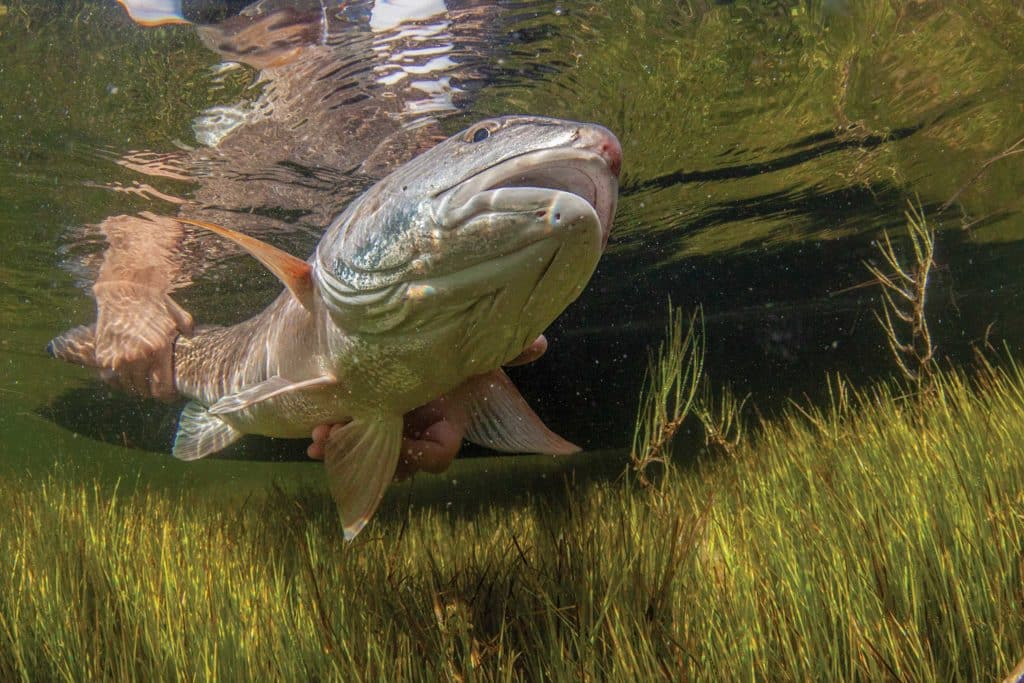
Their seasonal forays back to the beach make these bruisers accessible to anglers in a world-class trophy fishery, especially from September through November, when they gorge themselves in preparation for winter. During this time, look for big reds in and around inlets and passes, deep channels within estuaries, the surf on beachfronts, and on shoals and sandbars. Fabled spots include Louisiana’s Southwest Pass, Dixey Bar in Alabama, Georgia’s Altamaha River Delta, and Hatteras Point and Pamlico Sound in North Carolina.
One special group of bull reds breaks the inshore/offshore migration rule, spending their lives in the Indian River and Mosquito Lagoon complex along Florida’s Space Coast. Anglers make a pilgrimage to this legendary locale with realistic expectations of seeing massive schools of bull reds in knee-deep water, with the possibility of boating a fish topping 50 pounds. The nearby town of New Smyrna Beach is the self-titled “Redfish Capital of the World.”

During their nearshore travels, large reds congregate under mullet and menhaden schools, mixing with sharks, tarpon and jack crevalle. Once the adults move farther offshore with the onset of winter, the bulls become incidental catches on man-made reefs and natural live bottom. On rare occasions, anglers plying offshore waters find acre-size schools of big redfish at the surface. Anything resembling prey tossed into the melee brings a vicious strike.
State slot-size limits (the size of fish you’re allowed to keep) vary from 23 to 30 inches, meaning that most redfish reaching adulthood are protected. Federal waters are closed to taking redfish of any size.
The few states that still allow large fish to be kept limit the take to one per day or two per year. Even when allowed, most anglers choose not to keep adults for conservation purposes, with the desired result being an abundance of bulls and the promise of future generations of redfish.
Hunger Games
Red drum are opportunistic and aggressive consumers of a seafood smorgasbord including shrimp, crabs and fish. However, the list of things found in their stomachs reads like a fish version of the Bizarre Foods television series: mice, turtles, snakes, nutria, ducklings and sand dollars. Crustaceans prove more important as a food source during the summer and fall, while small fish become the primary target during the winter months.
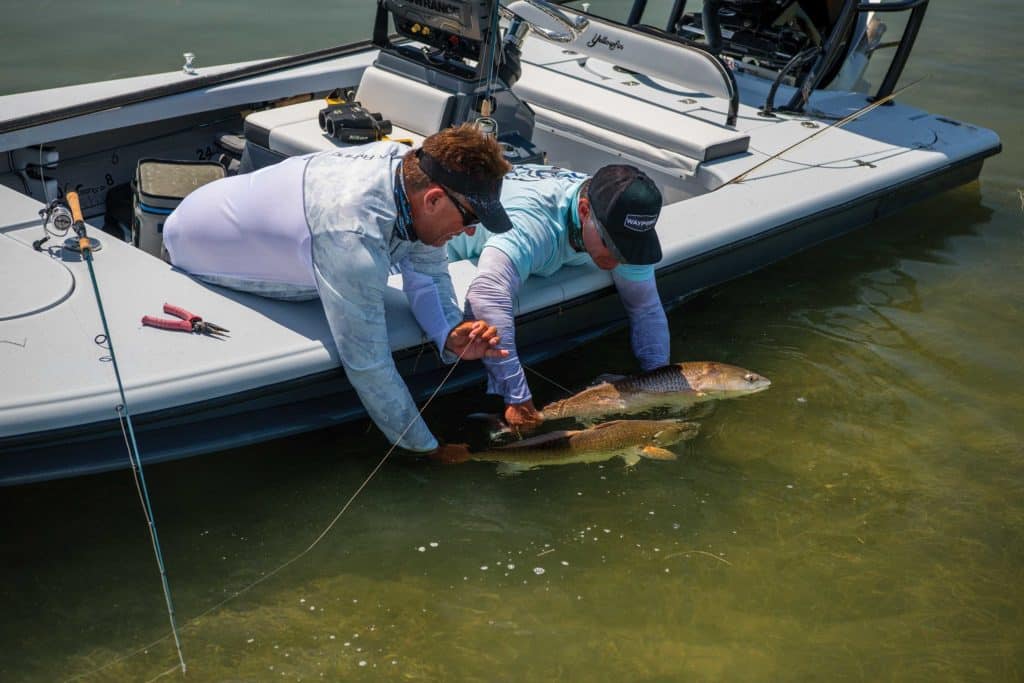
Redfish locate prey with sight, touch and smell, typically using their down-turned mouth to forage on or near the bottom. They capture prey either by grasping it in their lips, which are lined with small teeth, or by flaring their gill covers to create a suction that draws prey into the mouth. Picture a copper-colored Hoover vacuum.
Crushing teeth located in the throat make short work of hard-shelled critters such as crabs. While best equipped for bottom feeding, redfish readily take prey throughout the water column, and even from the surface on occasion. The sight of redfish blowing up on a topwater lure is a sight not soon forgotten.
Shrimp top the list of proven natural baits for juveniles. Present them live—suspended under a float or free-lined—or dead, rigged weedless or on a jig head. Finger mullet, small menhaden, pilchards and mud minnows (killifish) hooked through the lips and fished on a Carolina rig also bring strikes from feeding youngsters. Small crabs also produce, especially when sight-casting to fish foraging in a flooded marsh.
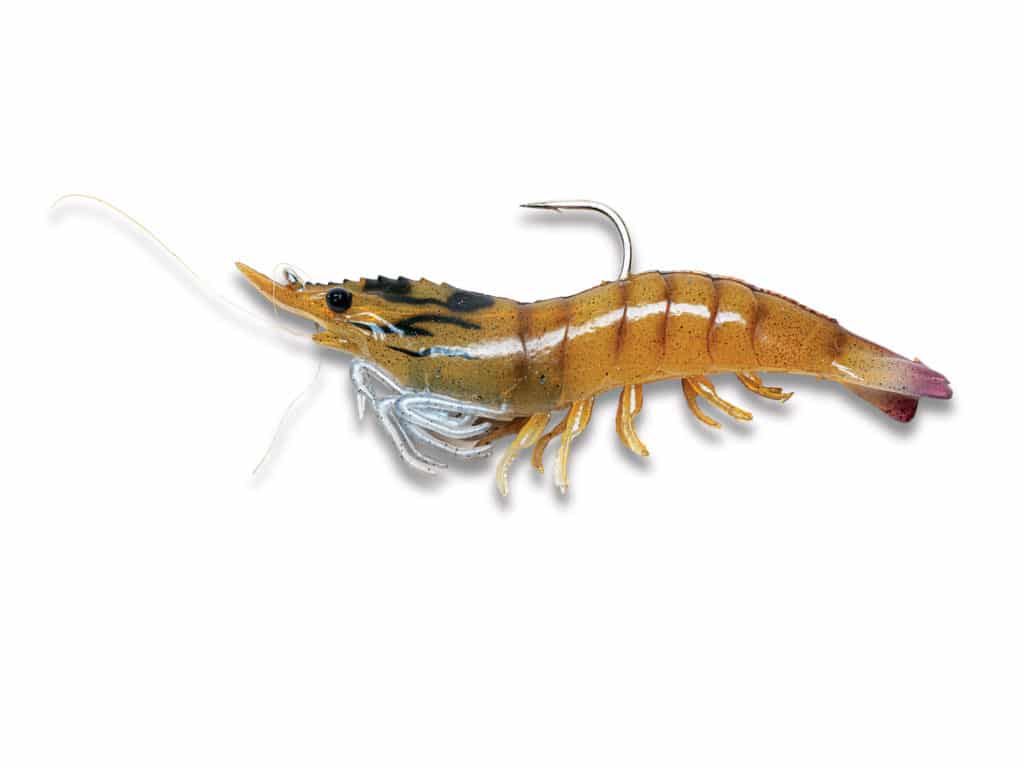
For bull reds, a whole or cut baitfish on a large circle-hook rig tops the natural-bait list in most locales. Mullet and menhaden work best, but whiting, ladyfish, bluefish, spot and Atlantic croakers also draw interest. Successful anglers often create a mixed spread of chunks—heads are great—and hand-size whole fish, live or butterflied. In some areas, whole or halved crabs are favored.
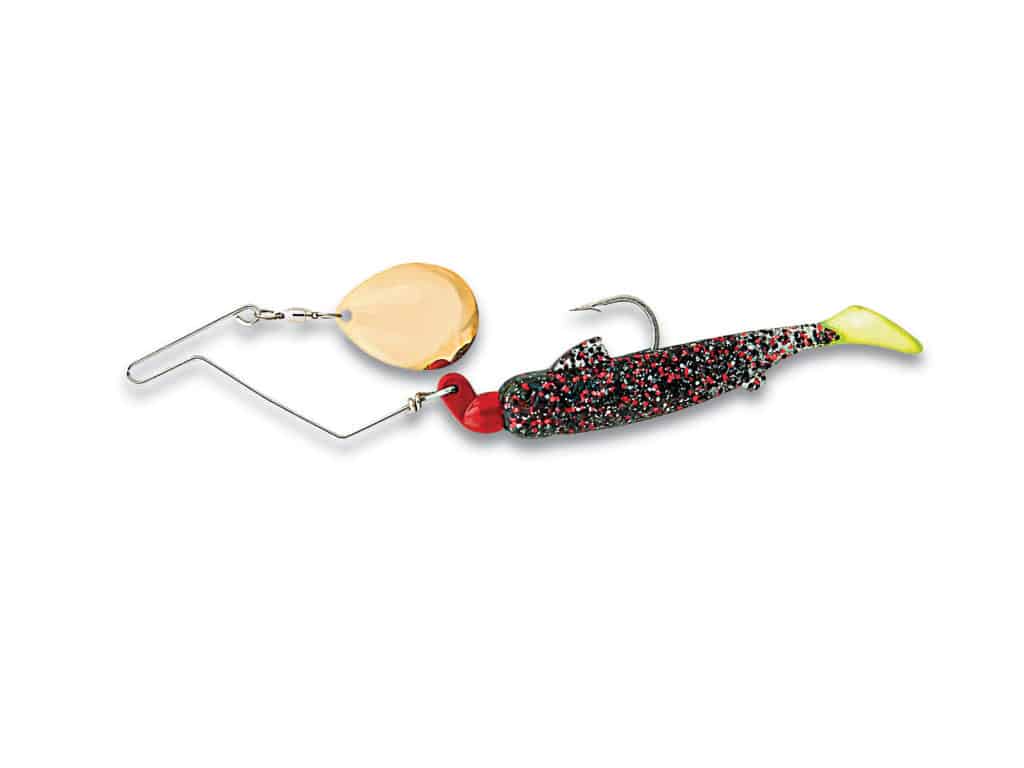
A growing cadre of anglers out there pursues red drum using only lures, knowing hungry reds enthusiastically respond. Metal spoons, such as the Johnson Silver Minnow, first made in 1923, have probably produced more redfish than any other lure. Soft-plastics in various shapes and colors fished on jigs and rigged Texas-style are popular. Crankbaits mimicking mullet, menhaden, anchovies and other species in a variety of styles and sizes can be presented at the surface, middepth or on the bottom. Circle hooks replace trebles on some models. Spinnerbaits, a mainstay of freshwater bass anglers, also prove deadly on redfish, and work particularly well as search lures.
Redfish Forever
Texas, Florida and South Carolina produce hatchery-reared redfish to enhance the abundance for anglers, and to better understand the factors affecting native populations. The hatchery-reared fish mitigate the impacts of fish kills due to environmental factors such as red tides. Typically released at a few days or weeks of age and inches in length, those fingerlings that survive take on the same behaviors as their wild cousins, including a willingness to take a bait or lure.
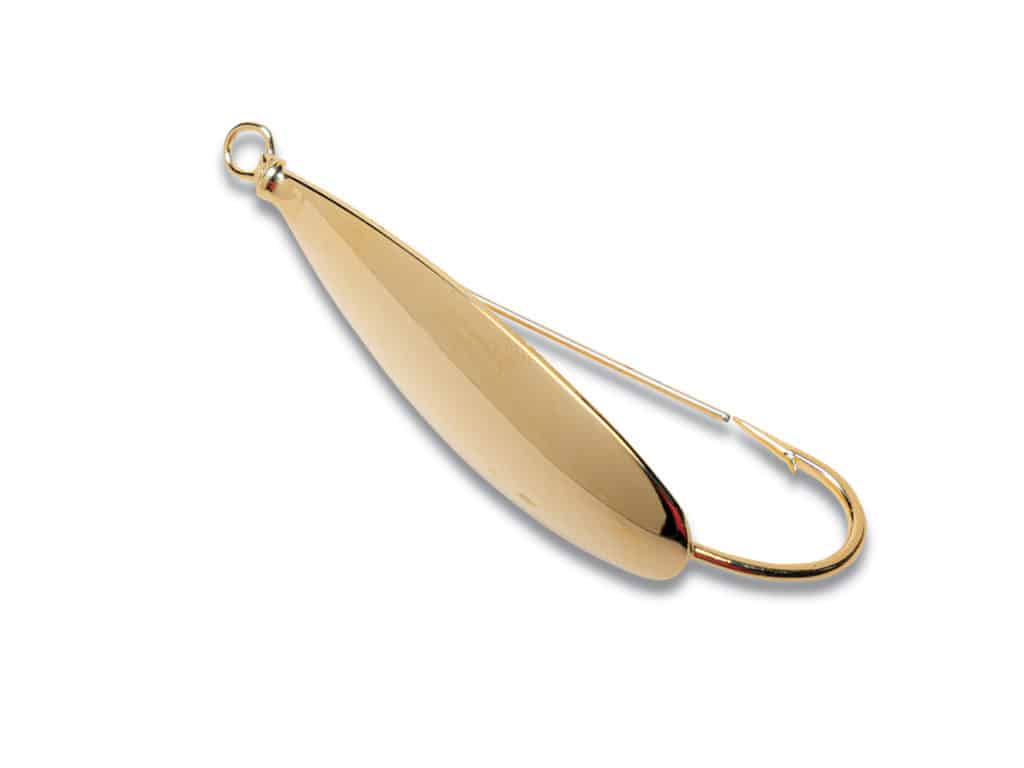
Scientists mark hatchery-reared fish in a variety of ways, including genetic fingerprinting, to aid scientific surveys and document angler catches over the fish’s long life span. Data indicates the survival rates of these hatchery-reared fish and their contribution to anglers’ catches justify the cost of production. Yet even the most ardent supporter of saltwater fish hatcheries will agree that stocking redfish should not replace sound management of wild populations and their habitats.
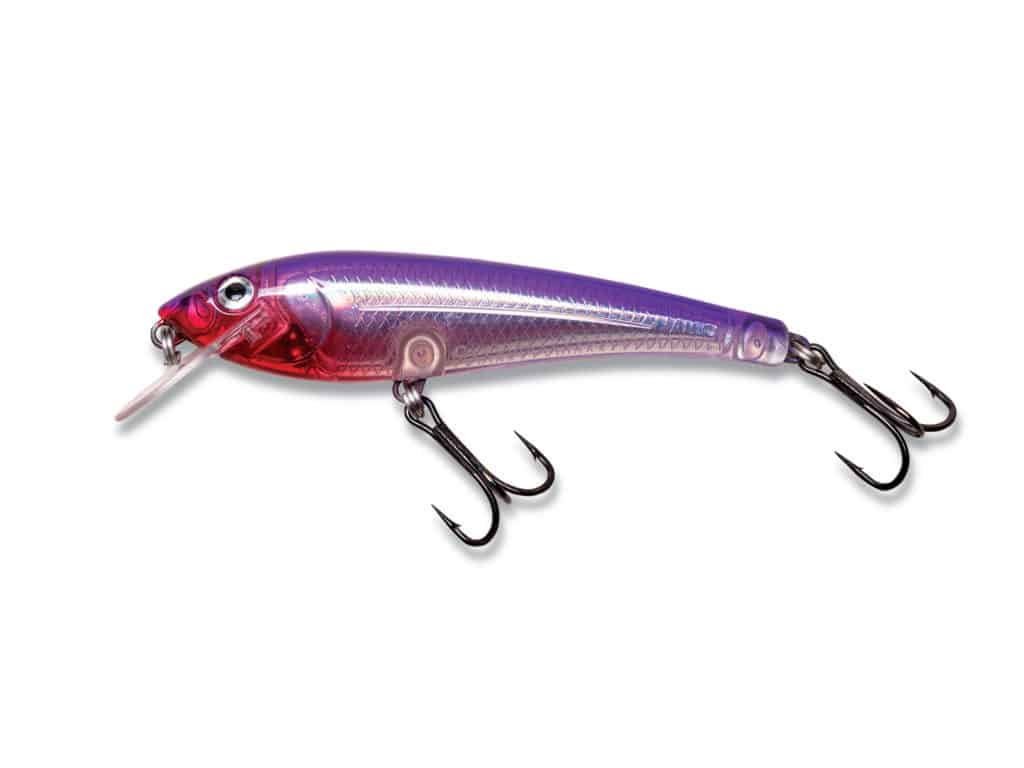
Most coastal state marine resource agencies, with assistance from fishing clubs and conservation group programs like the Coastal Conservation Association’s Building Conservation Trust, have been busy restoring and creating fish habitat. Oyster-reef, seagrass and marsh restoration directly benefits redfish by providing shelter and feeding areas for juveniles. Adult fish use man-made reefs during the time they spend offshore.
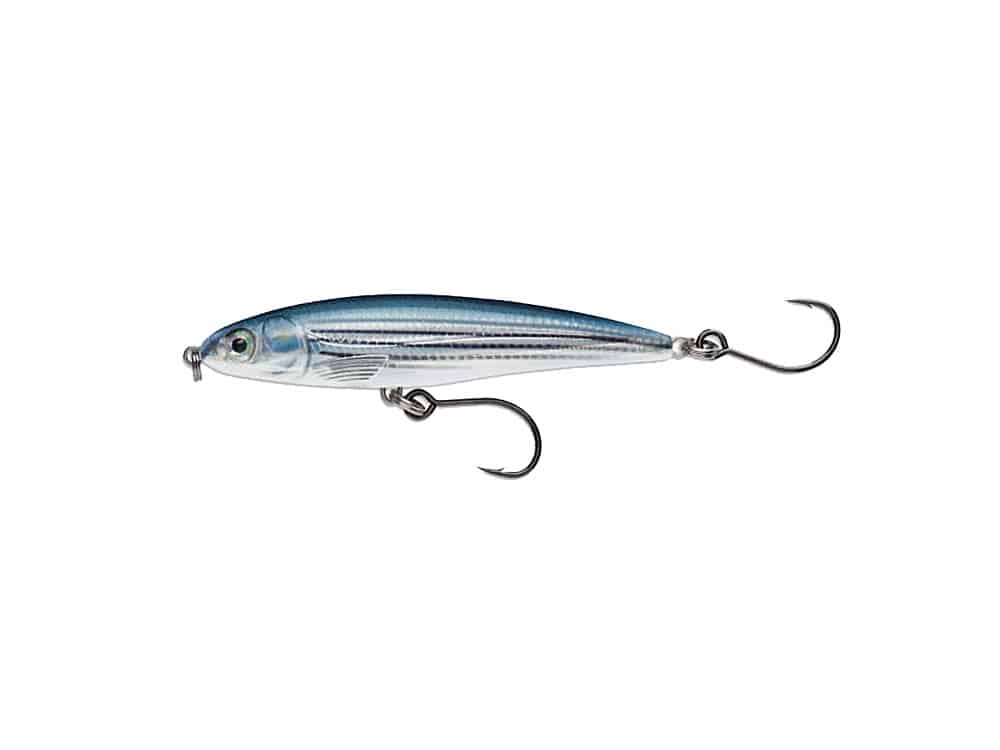
To ensure more redfish for your future fishing, comply with regulations and, better yet, choose to also take fewer fish than the law allows. Use circle hooks when targeting reds, especially adults, and employ best practices when targeting and handling fish you plan to release. Lastly, support conservation organizations and their efforts to protect and improve fish habitat.









